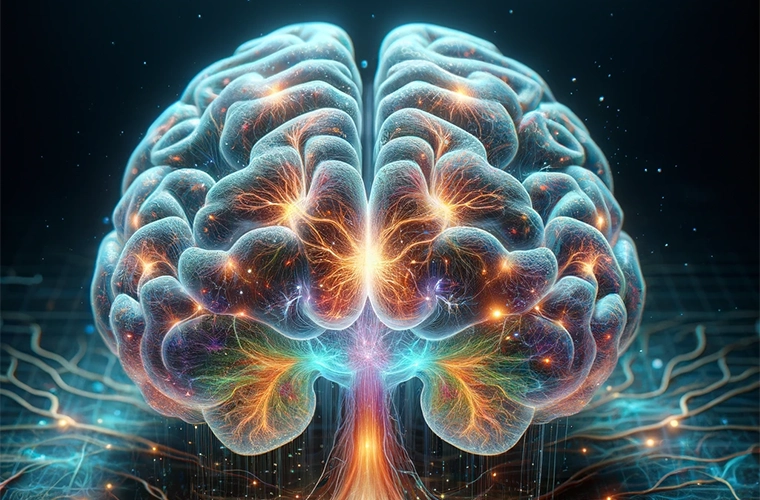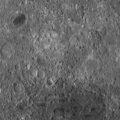In a pioneering study, a team of researchers from Massachusetts General Hospital and Boston Children’s Hospital have identified a brain network essential for human consciousness.
Aided by advances in ultrahigh-resolution magnetic resonance imaging (MRI) technology, researchers discovered previously unknown pathways connecting various brain regions, forming what they termed the “default ascending arousal network” (DAAN).
In findings published in Science Translational Medicine, researchers propose that this brain network plays a pivotal role in maintaining wakefulness and integrating arousal with awareness in the resting human brain.
The discovery could be a significant breakthrough in understanding a range of neurological disorders while shedding light on one of the most enigmatic aspects of the human experience: human consciousness.
“Our goal was to map a human brain network that is critical to consciousness and to provide clinicians with better tools to detect, predict, and promote recovery of consciousness in patients with severe brain injuries,” lead author Dr. Brian Edlow, MD and co-director of Mass General Neuroscience explained.
Consciousness has long been a topic of fascination and mystery in both scientific and philosophical communities. Despite advancements in neuroscience and cognitive science, a precise understanding of how consciousness arises from brain activity has yet to be discovered. Traditional theories have often fallen short, offering glimpses but not the complete picture of this profound aspect of human existence.
Understanding disruptions to consciousness, as seen in conditions like vegetative states or altered states of consciousness, has posed further challenges in fully explaining the complexities of human awareness.
Modern science generally understands consciousness to be comprised of two key elements: arousal, the state of wakefulness, and awareness, the content of one’s conscious experience. Importantly, these components can exist independently, as observed in awake individuals who lack awareness, like those in a vegetative state.
In their recent study, researchers used data from postmortem brain specimens and high-resolution 7-Tesla MRI scans of 84 healthy individuals to better understand the neural pathways involved in conscious arousal and awareness.
During analysis, 18 interconnected nodes were identified. These nodes communicate through specific pathways, facilitating the flow of information between the brainstem and higher brain regions. Researchers say that these pathways form a “default ascending arousal network” (DANN) that sustains wakefulness in the resting, conscious human brain.
The concept of a “default” network arises from the observation that specific brain networks exhibit peak activity when the brain is in a state of rest and not engaged in any particular task. This network contrasts with others that become more active during goal-oriented activities, indicating a dynamic interplay between different brain regions depending on whether the mind is at rest or focused on particular objectives.
Researchers also noted that the ventral tegmental area (VTA), a dopamine-producing region in the brainstem, acted as a central hub within the DAAN. It exhibits extensive connectivity with the cortical default mode network (DMN), a brain network involved in self-awareness and higher cognitive functions.
This finding suggests that the VTA’s dopaminergic pathways are crucial for modulating wakefulness and integrating it with awareness, providing a neuroanatomical basis for the conscious state.
“Our connectivity results suggest that stimulation of the ventral tegmental area’s dopaminergic pathways has the potential to help patients recover from coma because this hub node is connected to many regions of the brain that are critical to consciousness,” said Dr. Edlow.
The results significantly advance our understanding of the brain network and neural basis of consciousness. Prior research had mapped the cortical networks responsible for awareness, but the subcortical networks crucial for arousal remained elusive due to the small size and anatomical complexity of structures like the brainstem.
However, using ultra-high resolution structural and functional MRI data allowed researchers to identify previously unseen pathways connecting the brainstem, thalamus, hypothalamus, basal forebrain, and cerebral cortex.
In a press release by Mass General, senior author and professor Emerita at Boston Children’s Hospital and Harvard Medical School, Dr. Hannah Kinney emphasized the broader implications of these findings and the potential for understanding the nature of human consciousness.
“The human brain connections that we identified can be used as a roadmap to better understand a broad range of neurological disorders associated with altered consciousness, from coma to seizures to sudden infant death syndrome (SIDS),” said Dr. Kinney.
Despite the study’s groundbreaking potential, researchers caution that further research is needed to confirm and expand upon these findings. This includes confirming results with a larger sample size and increased imaging resolution to accurately map individual axons in nerve cells.
Researchers are currently conducting clinical trials to stimulate the default ascending arousal network in patients with coma after traumatic brain injury, with the hope of restoring consciousness.
As this line of research progresses, it holds the promise of significantly advancing our understanding of consciousness and improving clinical outcomes for patients with severe brain injuries.
Ultimately, the journey to understand human consciousness is far from over. However, this recent discovery of the DAAN could mark a significant milestone in unlocking the secrets of the mind, bringing us one step closer to comprehending the most profound aspect of our existence.
Tim McMillan is a retired law enforcement executive, investigative reporter and co-founder of The Debrief. His writing typically focuses on defense, national security, the Intelligence Community and topics related to psychology. You can follow Tim on Twitter: @LtTimMcMillan. Tim can be reached by email: tim@thedebrief.org or through encrypted email: LtTimMcMillan@protonmail.com

